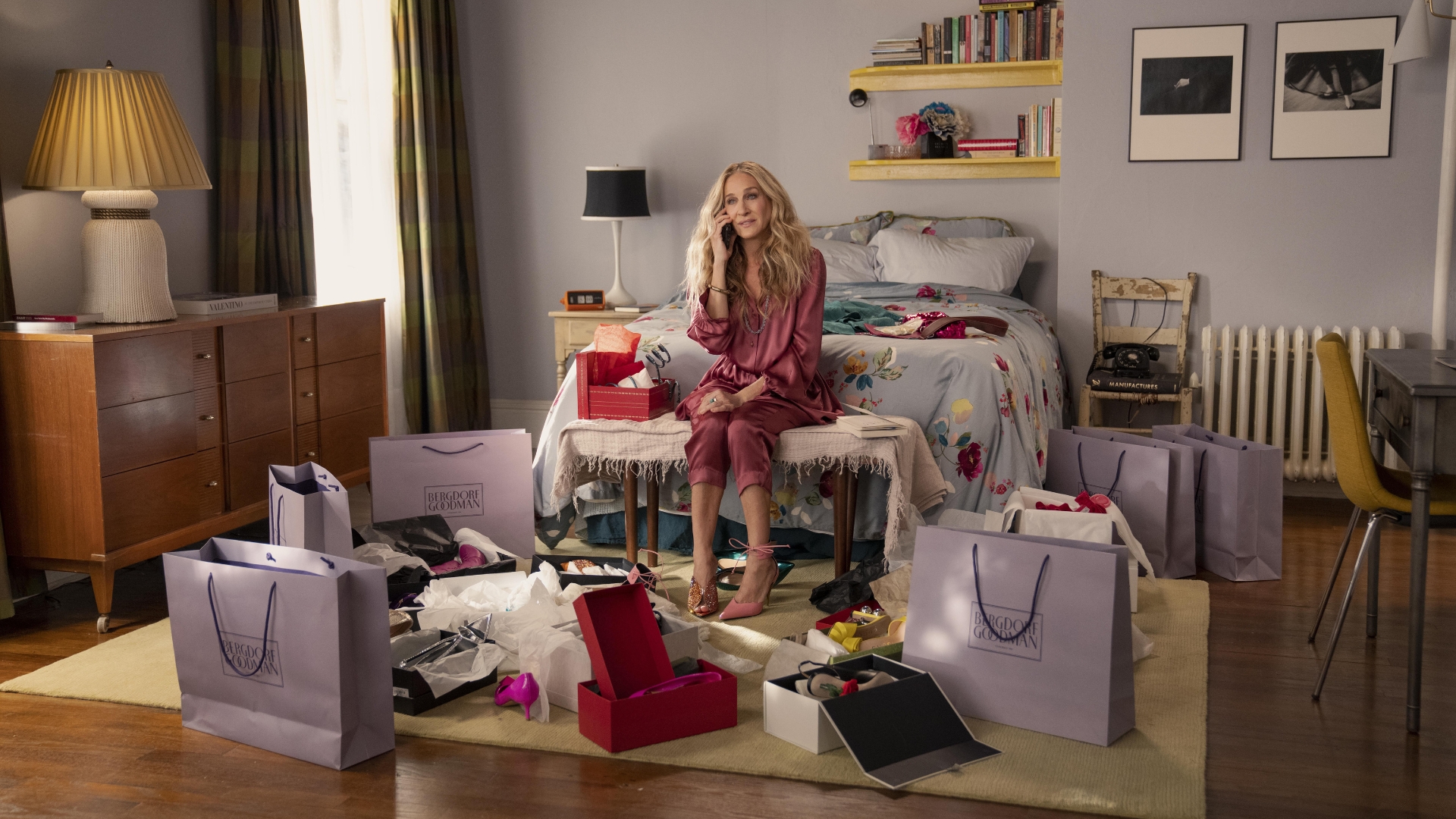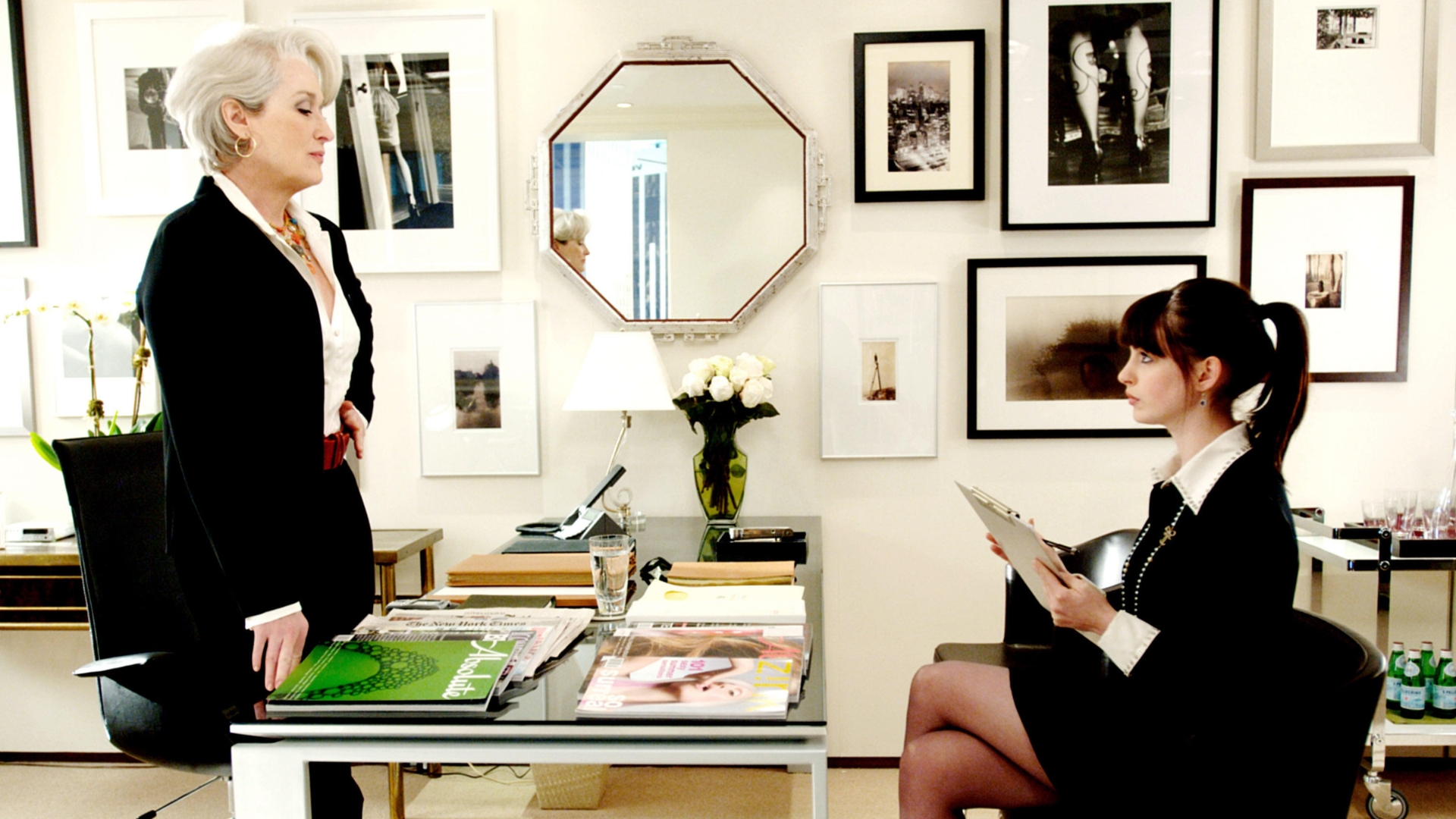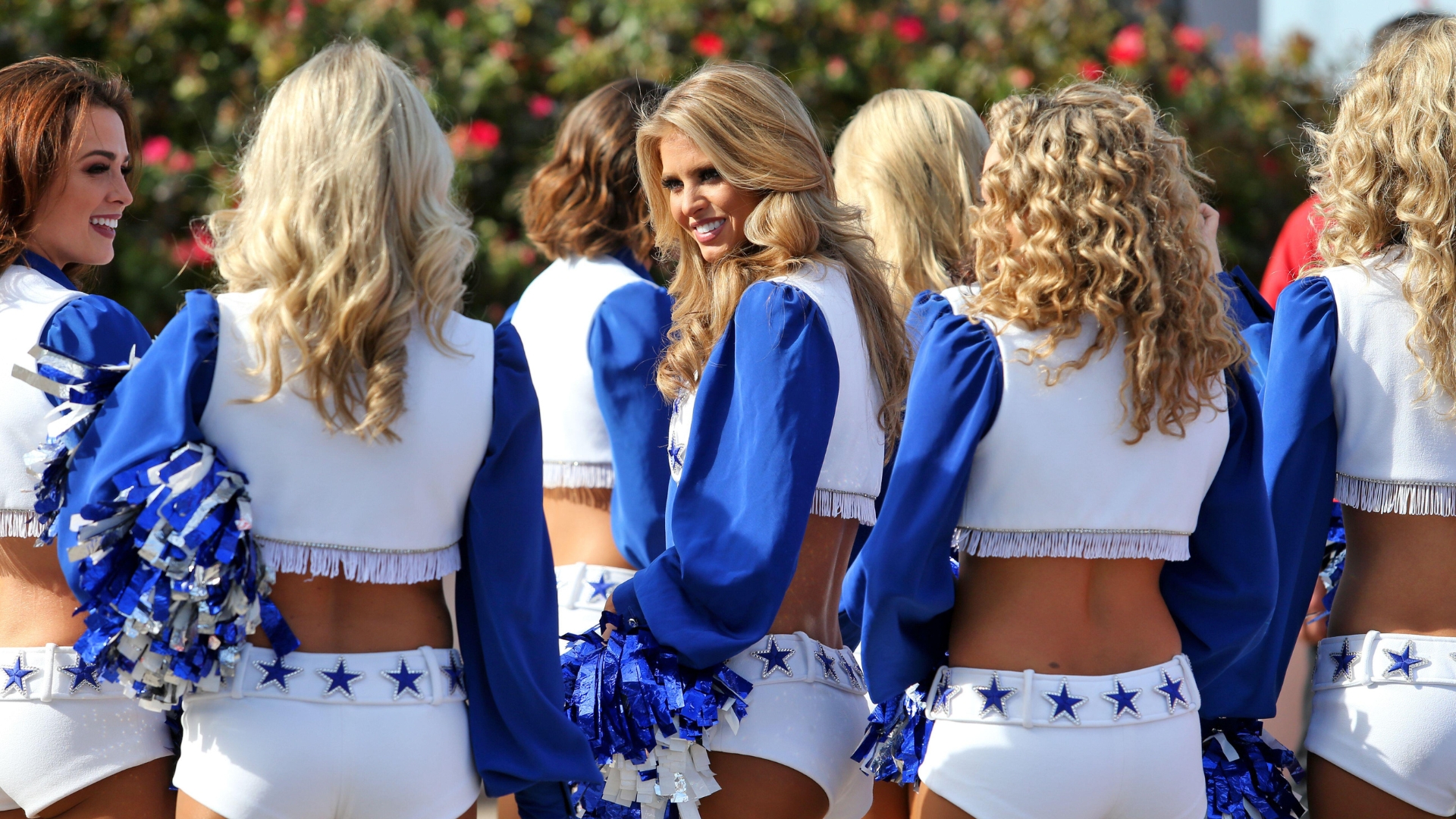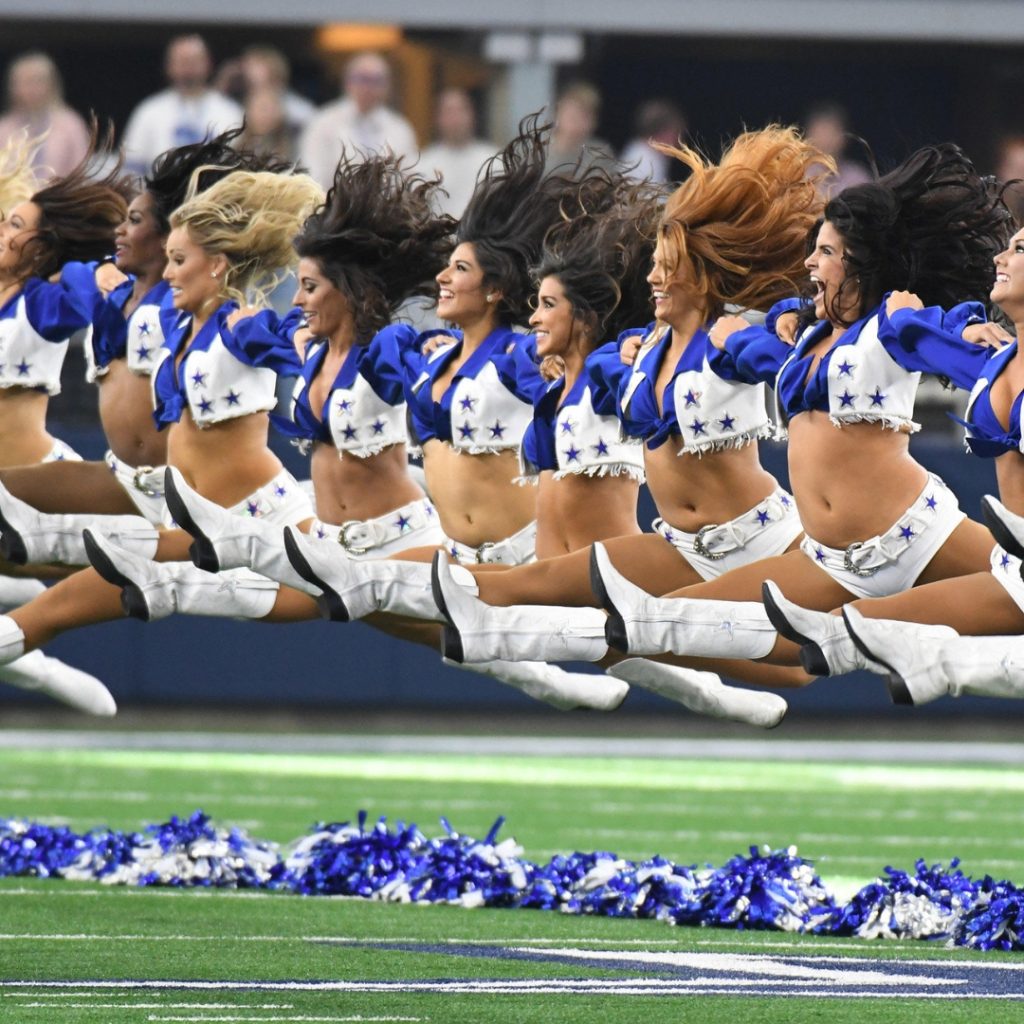When you look past the glamour and glitz of cheerleading, what does being a professional cheerleader actually entail? It’s a question that was answered, warts and all, in Netflix’s recent hit docuseries, America’s Sweethearts: Dallas Cowboys Cheerleaders. Over the course of seven episodes, viewers are shown just how demanding the job of being a cheerleader for the world’s most iconic cheerleading squad actually is. Their extreme schedules, elite athleticism and the total and utter dedication they’re expected to give their role boggle the mind. And that’s not even touching on the narrow beauty standards—these women are under immense pressure to maintain a certain body type and constantly look ‘game-ready’.
But there was one moment that hit a nerve, particularly for many women watching. When asked about the low pay the cheerleaders receive, Charlotte Jones, executive vice president and chief brand officer of the Dallas Cowboys Football Club, said something that’s ignited fierce debate online. “There’s a lot of cynicism around pay for NFL cheerleaders, as it should be. They’re not paid a lot,” Charlotte said. “But the facts are, they don’t come here for the money. They come here for something that’s actually bigger than that to them. They have a passion for dance. There are not a lot of opportunities in the field of dance to get to perform at an elite level. It’s about being a part of something bigger than themselves.”
In her attempts to justify the paltry pay these cheerleaders receive—pay low enough that many of them also work full-time jobs to make ends meet—Charlotte unintentionally opened a dialogue about an issue that pervades many industries: the idea that if a job is prestigious, those working it should happily accept lower pay. Adding insult to injury is the fact that Charlotte, the daughter of Jerry Jones, the billionaire owner of the Dallas Cowboys, reportedly receives a salary of around USD$1.5 million a year, and the Dallas Cowboys organisation itself is worth USD$9 billion. Eye-watering monetary figures like these make the cheerleaders’ salaries even harder to stomach, especially when even the Dallas Cowboys’ mascot reportedly makes more than each of the cheerleaders does.
Victoria Harris, co-founder of The Curve, a podcast and financial-education platform for women, tells me she had a visceral reaction watching Charlotte explain away the cheerleaders’ pay. “What annoys me the most in this documentary is these older women that are instilling this view into these young girls that you should work for passion and not be compensated for your athletic ability or for what you bring into the franchise and the brand you’ve created,” she says. To Victoria, and many other women watching, what Charlotte was really saying was clear. “It’s telling them, ‘You’re not an asset to this franchise.’ All of that stuff makes you believe that you aren’t worthy of more—that you aren’t worth being adequately valued and compensated,” she says.

Unpacking Prestige Over Pay
So where did the concept of accepting prestige over pay come from, and are women unfairly affected by it? Lauren Valentino, Assistant Professor of Sociology at the University of North Carolina, tells me that while it’s not known how long this idea has been around, research in social psychology and behavioural economics tells us there are a couple of factors driving it.
“The first is the gender ‘double bind’ faced by women in particular, which is this idea that women can be either warm or competent but not both. This is part of why we see stereotypically ‘feminine’ (and stereotypically ‘masculine’) jobs as more prestigious—they confirm our preexisting, latent notions of women’s and men’s natures. This double bind is part of an implicit bias that permeates our society whether we realise it or not,” Lauren explains.
The second factor is something she describes as ‘crowding out’, which is when people worry that economic motives can replace altruistic ones. “So people might be suspicious of someone who expects to be paid for something we see as what they should do out of the kindness of their heart.
For instance, lots of research has shown that jobs involving ‘care work’—such as nannies, nurses, teachers—pay less. But we thank them with things like ‘teacher appreciation week’ instead. This is part of the prestige-over-pay trade-off.”
Lauren tells me that ‘benevolent sexism’ is another reason why we see jobs segregated by gender as more prestigious. Benevolent sexism is a subtle set of gender stereotypes that can seem innocent enough—like the belief that women are carers and men are protectors—but it often results in people who violate these norms being socially punished.
“So, researchers find that men who work in predominantly female jobs garner less prestige, as do women who work in predominantly male jobs. The vast majority of occupations are still gender-segregated today, and occupations that employ more women pay less. So although the gender wage gap has closed somewhat in the past 50 or so years as more and more women enter the labour force, the majority of that change has come from women going into the higher-paid, male-dominated occupations,” she explains. As a result, women like the Dallas Cowboys Cheerleaders who work stereotypically ‘female’ jobs experience a prestige-versus-pay trade-off that men working stereotypically ‘male’ jobs—like the Dallas Cowboys footballers, who earn millions of dollars a year—don’t.

According to Lauren, even in 2024 women and men are siloed in the kinds of jobs they tend to do, meaning this trade-off affects women much more. It’s a sentiment that Rae Cooper, Professor of Gender, Work and Employment at the University of Sydney, echoes. She tells me that for many decades, women’s work has been associated with having a ‘calling’ or a ‘vocation’ and that this is used as justification for paying them less than men.
Women often work in industries that require high levels of emotional labour or care for others; in particular, feminised areas like education, health and the arts.
“The underpinning logic is that women have lesser needs than men, that they have a male breadwinner to support them, which is patently not the case in the modern economy – if it ever was,” says Rae. “We should appropriately reward jobs according to the skills that are exercised by the employee who performs them and the complexity of the work, not on outdated notions of gendered value.”
Related: In need of a career change? Here are five low-stress jobs that pay well
"Benevolent sexism is a subtle set of gender stereotypes that can seem innocent enough"
Pink Collar Workers
Sadly, when more women enter a field, our perception of how prestigious it is changes, and not for the better. Michelle Brown, a Professor in Human Resource Management at the University of Melbourne, tells me there are numerous examples of the prestige of jobs changing over the years based on the gender makeup of their industry. “In the early years of banking, being a teller was a prestigious job done solely by men. As the industry changed (technology deskilled the work and it became less secure) being a bank teller was no longer as prestigious—and it’s now a female-dominated occupation.”
Women working in female-dominated industries, particularly ones that are care- oriented, fall into a category sociologists describe as ‘pink collar workers’. As viewers of America’s Sweethearts: Dallas Cowboys Cheerleaders learnt, despite the immense work required, the unrelenting physical demand on their bodies and the global recognition they receive, their jobs are still shockingly low ranking when it comes to pay and status.
It’s something former NFL cheerleader Brett Jansen knows firsthand. Brett was a competitive dancer from a young age and, after she graduated from college, instead of moving to Los Angeles to pursue a career in backup dancing, she became an NFL cheerleader. “It gave me the opportunity to continue crafting my skill and perform in front of an audience of 80,000 fans. Dancing is a part of my soul and something that I will forever treasure for the rest of my life,” she tells me.

Brett cheered from 2010 to 2013, and says she was “basically paid minimum wage”. When I ask her how she feels reflecting back on what she was paid, she says she has mixed feelings. “We practised for sometimes four to five hours a day and paychecks for practices were around USD$60. And we had to clock in and out, but I don’t think that we were always paid for that time, but nobody really questioned it. For game days, I think we got around USD$150 … at the time I felt like it was okay, but looking back, I definitely think that we were worth more and we certainly should have earned more.”
While Brett agrees that prestige over pay affects women much more than men, she thinks it has more to do with where consumers are spending their money. “At the end of the day, the NFL is a business. And when I was on the team, being a cheerleader was a cost centre to the organisation, meaning we probably cost the organisation more money than we were making it. So I was never upset about the amount of money that we were making.” More than anything, Brett wholeheartedly believes that if you ask any former NFL cheerleader whether they would have done the job for free, they would say yes. For her, the experience encompassed many things—from visiting children in cancer wards and wounded soldiers on American military bases, to standing on the field singing the national anthem—that you can’t put a monetary value on. In saying that, when reflecting on the financial behemoth organisations like the Dallas Cowboys have become, and how much revenue the cheerleaders are bringing in, Brett believes they deserve to be remunerated fairly. “When I think about those cheerleaders, [I realise] they have Dallas Cowboys Barbies; they have so many different things they use those girls’ faces for, yet none of them are getting royalties … it’s become a brand that’s borderline bigger than the actual Dallas Cowboys players themselves. I think that they should be paid accordingly, which I know [the club] is currently not doing.”
So, are there any circumstances where it’s worth accepting prestige over pay? Ultimately, women shouldn’t be forced to decide between prestige or pay—they should be financially rewarded based on their skills and what their job requires of them. But we don’t yet live in a world that works this way, and sometimes, particularly if you work in a female-dominated industry, you’ll be forced to choose one over the other at some point in your career. For Victoria Harris, while it comes down to the individual deciding what they’re willing to sacrifice, she thinks women need to stop undervaluing themselves and settling for less. “It takes generations to change this and it’s going to be hundreds of years before we get paid the same as men. And with things like this, it frustrates me because it’s just going to set us back even more and we’re going to continue to have these conversations, which is so frustrating.”
"Their extreme schedules, elite athleticism and the total and utter dedication they’re expected to give their role boggle the mind"
The excuse so often used for paying women less—the very reasoning Charlotte Jones used in the docuseries—is that they’re doing their jobs for the ‘passion’ or ‘love of it’. This justification feels particularly grating considering both the Dallas Cowboys Cheerleaders and footballers are doing their jobs for the same reasons, but it’s the cheerleaders who are forced to accept that they’re only worth a minimum wage. “When you’ve got a whole gender that has been undervalued and underpaid and underrepresented for so long, that’s when it becomes an issue. If you ask any of those Dallas Cowboys Cheerleaders if they would like a pay rise or if they would prefer to do this full-time and not have to work two jobs just to be able to afford their lifestyle, they would say yes,” Victoria says.
Likewise, Lauren Valentino believes the answer to the prestige-over-pay dilemma doesn’t lie in changing how we confer prestige, but in simply paying women what they deserve. “I’m glad we see typically feminine jobs—such as nurse, teacher and, yes, cheerleader—as high status. The solution is to place a fairer monetary value on women’s work, even if this is stereotypically feminine, just like we do for men’s work. Prestige doesn’t pay the bills. Ideally, we would live in a world where women simply wouldn’t have to face this prestige-over-pay trade-off.”
This article originally appeared in Issue 01 of Cosmopolitan Australia. Get your copy and subscribe to future issues here.



